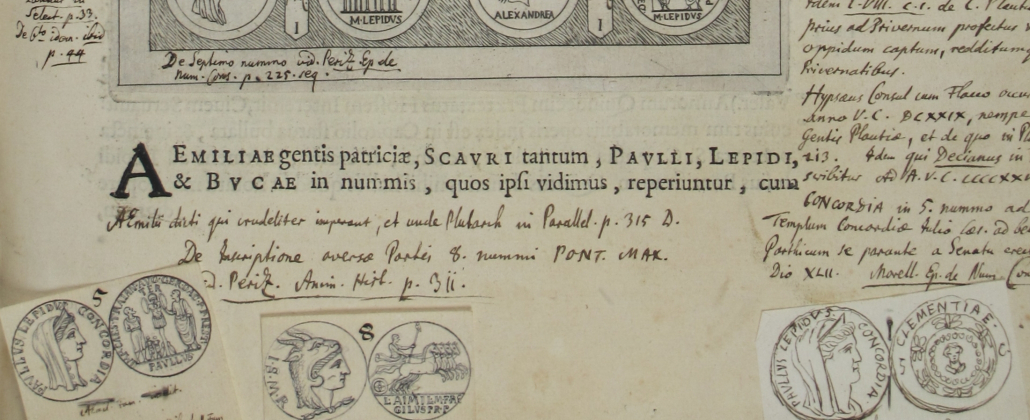Research
Every old book, every manuscript has a rich history. Notes, stamps and numbers represent proper names, dispersed collections, book thefts and book donations. The diversity of traces, which is often difficult to unravel, turns historical library collections into multi-layered cultural assets. This is especially true for the unique collection cosmos of the Staatsbibliothek. In the processing of antiquarian acquisitions, but also in numerous project contexts, the analysis of the provenance traces found in the objects is an essential task of many employees in the Staatsbibliothek. The retrospective provenance recording of extensive holdings of the 17th century could thus be accomplished within the framework of the national bibliographic project Verzeichnis der im deutschen Sprachraum erschienenen Drucke des 17. Jahrhunderts (VD17). For the 16th century collection, there is also retrospectively recorded provenance data available, published in the “Short Title Catalog der Drucke des 16. Jahrhunderts der Staatsbibliothek zu Berlin (ST16)”.
One particular aspect of provenance research has gained special importance since 1998: The obligation to return books and libraries, looted during the Nazi era, to their rightful owners, makes the search for cultural property, seized as a result of Nazi persecution an urgent task. The team in the Department of Manuscripts and Early Printed Books, which was established as an independent working area in 2007, has since been coordinating research on Nazi-looted property and other unlawful acquisitions (e.g., cultural property confiscation in the Soviet Occupation Zone/GDR) in the collections of the Staatsbibliothek and its predecessor institutions. In coordination with the SPK’s legal department, the provenance team also accompanies corresponding restitution proceedings. In the meantime, several long-term projects have made it possible to conduct important basic research beyond the systematic examination of the Staatsbibliothek’s collections in order to trace the worldwide distribution processes of looted cultural assets during and after the Nazi era.
However, the team in the Department of Manuscripts and Early Printed Books is also responsible for provenance research in the original and broader sense of researching the origin and biography of objects as well as their collection contexts. In expert committees and working groups, the team plays a key role in shaping the further development of cooperative, sustainable, and cross-disciplinary provenance research and cataloging, and develops new research approaches and project ideas under the umbrella of the Stiftung Preußischer Kulturbesitz.
The results of provenance research offer a wide range of information for book and library history as well as for biographical, social and cultural history and intellectual history questions. The research data of the Staatsbibliothek are freely available for subsequent use and are maintained in supra-regional data systems. Since 2004, the Department of Early Printed Books has been recording provenance data in a standardized form according to the “Weimar Model” and making it searchable via the local online catalog (StabiKat). Since 2012, authority data (personal, corporate, and work records, the latter for provenance characteristics and collections) have been used or newly created for provenance recording in the Integrated Authority File and linked in the union catalog of the Common Library Network (GVK, now K10plus) with the copy histories that can be searched throughout the network. Image files and additional metadata, e.g. on dimensions, motif and dating for the provenance characteristics; furthermore, detailed descriptions of provenances and collections can be found in the ProvenanceWiki .
Only the handwritten additions and drawings by Johann Carl Schott (1672-1717) reveal the provenance of this volume. Carl Schott had been Ezechiel Spanheim’s secretary and later was responsible for the processing of Spanheim’s collection in the Königliche Bibliothek zu Berlin.
